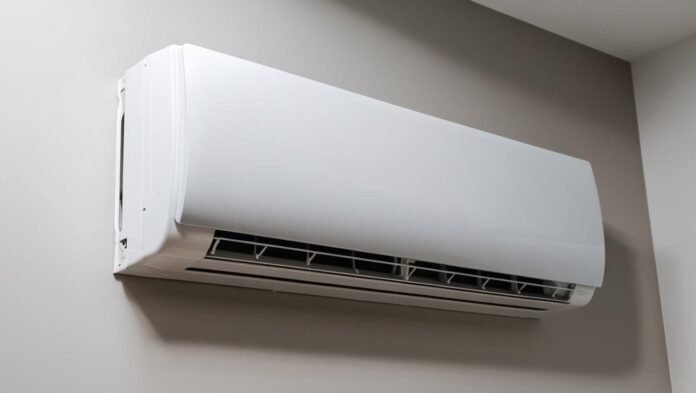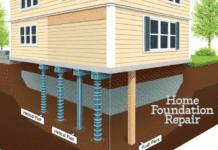In the quest for energy efficiency and personalized comfort, homeowners are increasingly turning to ductless mini splits as a preferred air conditioner solution. These systems offer a blend of flexibility, efficiency, and ease of installation that traditional HVAC systems often can’t match. This comprehensive guide delves into the reasons behind the growing popularity of ductless mini splits, their advantages, considerations, and practical insights to help you determine if they’re the right fit for your home.
Table of Contents
Understanding Ductless Mini Splits
Ductless mini split systems consist of two primary components: an outdoor compressor/condenser unit and one or more indoor air-handling units. These components are connected by a conduit that houses the power cable, refrigerant tubing, and a condensate drain. Unlike traditional central air conditioners that rely on a network of ducts to distribute cooled or heated air, mini splits deliver air directly into specific zones or rooms. This direct delivery system eliminates the need for ductwork, offering a streamlined and efficient approach to indoor climate control.
The indoor units are typically mounted on walls, ceilings, or floors, providing flexibility in placement to suit various room layouts and aesthetic preferences. Each indoor unit operates independently, allowing for customized temperature settings in different areas of the home. This zoning capability not only enhances comfort but also contributes to energy savings by conditioning only the spaces that are in use.
Advantages of Ductless Mini Splits
Enhanced Energy Efficiency
One of the standout benefits of ductless mini splits is their superior energy efficiency. Traditional ducted systems can lose a significant amount of energy—sometimes more than 30%—due to ductwork inefficiencies, especially when ducts traverse unconditioned spaces like attics or basements. By eliminating ducts, mini splits reduce these energy losses, leading to lower utility bills and a reduced carbon footprint.
Furthermore, many ductless systems utilize inverter-driven compressors that adjust their speed based on the demand, ensuring that the system uses only the necessary amount of energy to maintain the desired temperature. This contrasts with traditional systems that often operate at full capacity, regardless of the actual cooling or heating needs, resulting in unnecessary energy consumption.
Zoned Comfort Control
Ductless systems provide the flexibility to create multiple zones within a home, each with its own thermostat. This zoning capability allows occupants to customize temperatures in different areas, enhancing comfort and further conserving energy by conditioning only the spaces in use.
For instance, if certain rooms are unoccupied, you can turn off the units in those areas while maintaining comfort in occupied spaces. This targeted approach not only improves comfort levels but also contributes to significant energy savings over time.
Flexible Installation Options
The compact nature of mini splits offers versatile installation possibilities. Indoor units can be mounted on walls, suspended from ceilings, or even placed as floor-standing models, catering to various aesthetic and spatial preferences. The connection between indoor and outdoor units typically requires only a small hole through the wall, simplifying the installation process compared to traditional systems.
This flexibility makes mini splits particularly suitable for older homes without existing ductwork, room additions, or spaces where extending or installing ductwork is impractical. The minimal structural impact and ease of installation can result in cost savings and less disruption during the installation process.
Improved Indoor Air Quality
Ductless mini splits often feature advanced filtration systems that reduce dust, allergens, and other particulates in the air. Without ducts that can accumulate and circulate contaminants, these systems can contribute to a healthier indoor environment. Regular cleaning of the filters ensures optimal air quality and system performance.
Traditional ducted systems can harbor dust, mold, and other allergens within the ductwork, which are then distributed throughout the home. By eliminating ducts, mini splits reduce the potential for such issues, making them a favorable option for individuals with allergies or respiratory concerns.
Quiet Operation
Ductless mini split systems are designed for quiet operation. The indoor units typically operate at sound levels as low as 19 decibels, comparable to the sound of rustling leaves or a whisper. This ensures a peaceful indoor environment, free from the disruptive noise often associated with traditional HVAC systems
The outdoor units are also engineered to minimize noise, allowing for flexible placement without disturbing occupants or neighbors. This makes ductless systems particularly suitable for bedrooms, home offices, and other areas where quiet is essential.
Considerations Before Installation
Initial Investment
While ductless mini splits can lead to long-term savings through reduced energy bills, the upfront costs can be higher than some traditional systems. However, these initial expenses are often offset by available rebates, tax credits, and the system’s energy-saving benefits over time.
It’s important to consider the total cost of ownership, including installation, maintenance, and operational expenses. In many cases, the energy savings and increased comfort provided by ductless systems justify the initial investment.
Aesthetic Impact
Some homeowners may have concerns about the visibility of indoor units. Unlike central systems that have minimal indoor visibility, mini splits require mounted units within living spaces. However, modern designs have focused on sleek, unobtrusive appearances to blend seamlessly with various interior styles.
Manufacturers offer a range of styles and finishes to complement different decors, and the compact size of the units allows for discreet placement. Discussing placement options with a professional installer can help address aesthetic considerations.
Regular Maintenance
To maintain optimal performance, it’s essential to clean or replace filters regularly and ensure that the outdoor unit remains free from debris. Consistent maintenance not only prolongs the system’s lifespan but also ensures it operates at peak efficiency.
While some maintenance tasks can be performed by homeowners, regular maintenance is essential to ensure that your ductless mini split system operates efficiently and has a long lifespan. While some tasks can be performed by homeowners, others require professional attention.
Homeowner Maintenance Tasks:
- Clean or Replace Air Filters: The indoor units have removable air filters that should be cleaned regularly, typically every 4-6 weeks, depending on usage and environmental factors. Clean filters promote better air quality and system efficiency.
- Keep the Outdoor Unit Clear: Ensure that the outdoor condenser unit is free from debris, vegetation, and obstructions within a two-foot radius to maintain proper airflow.
- Wipe Down Indoor Units: Dust and clean the exterior of indoor units with a damp cloth to prevent dust accumulation, which can affect performance.
Professional Maintenance Tasks:
It’s advisable to schedule professional servicing at least once a year. A qualified HVAC technician can:
- Inspect and Clean Coils: Dirty coils can reduce efficiency; professionals have the tools and expertise to clean them thoroughly.
- Check Refrigerant Levels: Proper refrigerant levels are crucial for optimal performance; technicians can identify and address any leaks.
- Examine Electrical Components: Ensuring that all electrical connections are secure and components are functioning correctly helps prevent system failures.
By adhering to a regular maintenance schedule, you can enhance the performance, efficiency, and longevity of your ductless mini split system.
Final Thoughts: Is a Ductless Mini Split Right for You?
The growing interest in ductless mini splits isn’t just a trend—it reflects a real shift in how homeowners think about comfort, energy use, and control. These systems offer powerful advantages over traditional HVAC setups, particularly for homes that lack ductwork or need targeted climate solutions.
If you value energy efficiency, quiet operation, and the ability to customize comfort room by room, a ductless mini split might be the right investment. While the upfront costs may be higher, the long-term savings and flexibility often outweigh the initial expense.
Before making a decision, consult with a certified HVAC professional who can evaluate your home and recommend the best system for your specific needs. With proper planning and installation, a ductless system can enhance your home’s comfort and value for years to come.
Whether you’re retrofitting an older home, upgrading a rental space, or simply looking to boost efficiency, ductless mini splits are proving to be a modern, practical solution that today’s homeowners increasingly rely on.
Apart from that, if you want to know more about The Best Color Palettes for a Relaxing Bedroom Ambiance then visit our Home Improvement category.
















